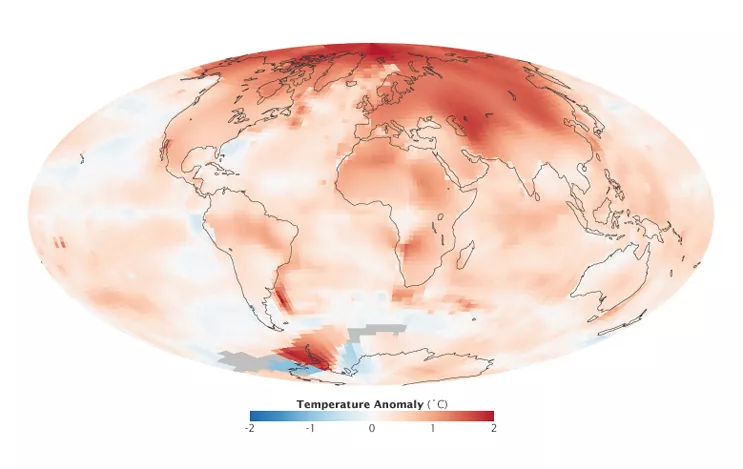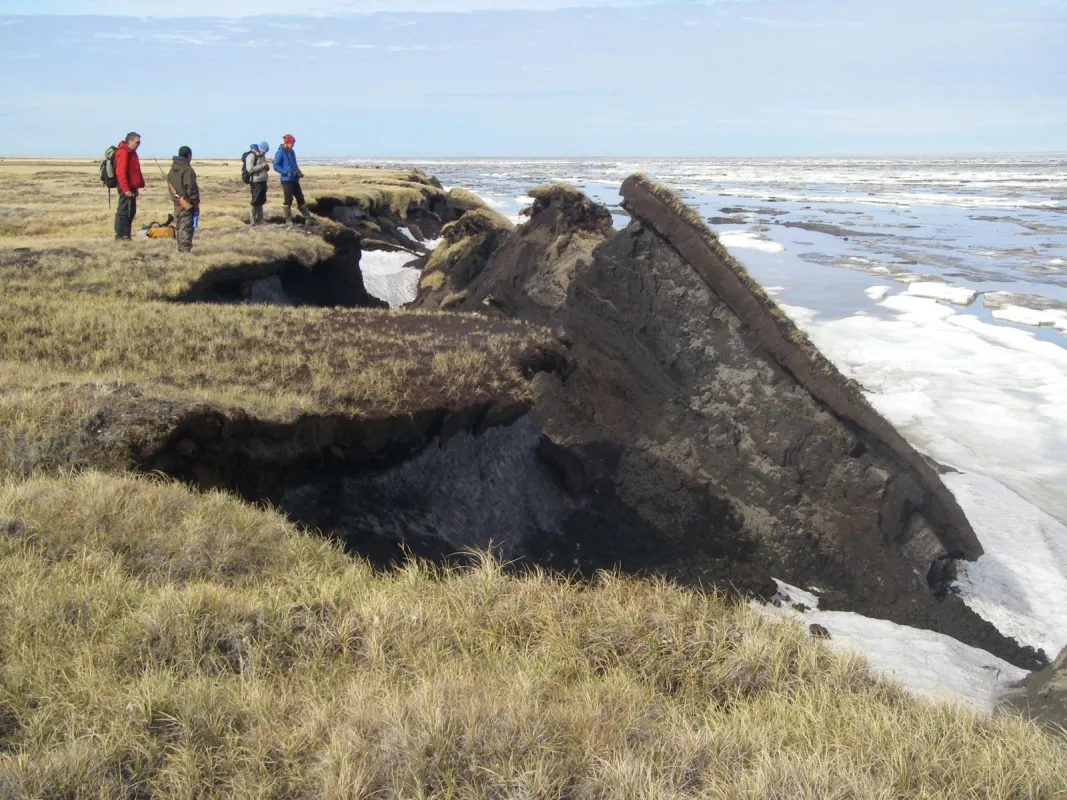The Arctic ice cover plays an important role in maintaining Earth’s temperature—the shiny white ice reflects light and heat that the ocean would otherwise absorb, keeping the Northern Hemisphere cool. The continued loss of Arctic sea ice will include further Arctic warming, erosion of Arctic coastlines, and a disturbance of global weather patterns. Sea ice loss will also open up the Arctic to increased human activity, further disturbing Arctic communities and ecosystems.
Sea ice loss contributes to Arctic amplification
When you spend a long time outdoors on a hot, sunny day, you can keep yourself cooler in light-colored clothing than in dark clothing. Light-colored surfaces, like sea ice, have high albedo, meaning they reflect most of the sunlight that reaches them. Dark surfaces, like the surrounding ocean water, have low albedo.
At the height of summer, when the Sun shines relentlessly on the Arctic Ocean, exposed ocean water absorbs nine times as much solar radiation, if not more, than sea ice does. Before ice can form again in the fall, the ocean must release the absorbed heat into the atmosphere. The loss of sea ice warms the Arctic, contributing to a phenomenon known as “Arctic amplification” where the Arctic warms at a faster rate than lower latitudes. Arctic amplification was predicted in the late 19th century; observed changes in the region indicate that Arctic amplification is now happening.
Sea ice loss leads to coastal erosion
Over the Arctic Ocean, sea ice absorbs the impacts of waves and limits shoreline wave erosion. As sea ice retreats farther away from surrounding landmasses, late-summer and autumn storms stir up strong waves that crash onto shore. Where increased wave action coincides with permafrost thaw, which softens land and makes it more vulnerable to erosion, coastlines may retreat rapidly. Buildings and roads close to the shore tumble into the sea.
Does sea ice loss raise sea levels?
By itself, sea ice melt has an insignificant effect on ocean level. Because it floats on the water surface, sea ice is already displacing its own weight and nearly all of its volume. In some situations, however, sea ice loss can indirectly contribute to higher ocean levels.
Just as sea ice absorbs wave energy and reduces wave action along shorelines, sea ice reduces wave action on ice, namely ice shelves (thick slabs of ice attached to coastlines that float over the ocean surface) and water-terminating glaciers. Increased wave action caused by sea ice retreat can flex and bend these ice bodies, increasing the possibility of retreat. Glaciers that have lost their ice fronts tend to flow faster, and because this process introduces a body of ice into the ocean that was not there previously, it raises sea level.
Bear in mind that, when a glacier accelerates into the ocean, many factors contribute to that process; sea ice retreat is just one, and not likely the most important. Likewise, ice shelves and tidewater glaciers in the Arctic, are small and do not hold enough ice to significantly affect ocean level.
Ice loss opens up the Arctic
The loss of Arctic sea ice could open up new regions to shipping, tourism, and oil extraction. Predicting the exact impacts of increased human activity in the Arctic is tricky. However, more people living, working, and extracting resources in the Arctic will likely require more infrastructure, and may raise the risk of emergencies needing cleanup or rescue.
The Arctic affects the rest of the planet
NSIDC scientist Twila Moon points out that changes in Arctic sea ice, land ice, and permafrost are often treated as unrelated issues when in fact they affect each other and the rest of the planet. The retreat of sea ice exposes greater expanses of darker ocean water, which absorbs more solar radiation than white sea ice, perpetuating the global warming effect. In contributing to Arctic amplification, sea ice loss leads to increased permafrost thaw, which drives the release of carbon dioxide and methane—an even more potent greenhouse gas. Some research indicates that sea ice loss near the Greenland Ice Sheet could release more heat from the ocean to the atmosphere above that ice sheet, accelerating melt. By increasing ocean absorption of heat, sea ice loss may impact the configuration of the jet stream, affecting weather at lower latitudes.
Antarctic sea ice is another story
Whereas Arctic sea ice has shown a clear declining trend over the course of the satellite record, Antarctic sea ice has shown no clear trend and instead shown substantial year-to-year variability. Unlike Arctic sea ice, which extends to the North Pole, Antarctic sea ice fringes the Antarctic continent, where the ice generally freezes and melts at lower latitudes. A majority of Antarctic sea ice already melts away each summer, and has done so since at least the start of the satellite record in 1979.
Reference
Moon, T. et al. 2019. The expanding footprint of rapid Arctic change. Earth's Future 7:212-218. doi:10.1029/2018EF001088.


